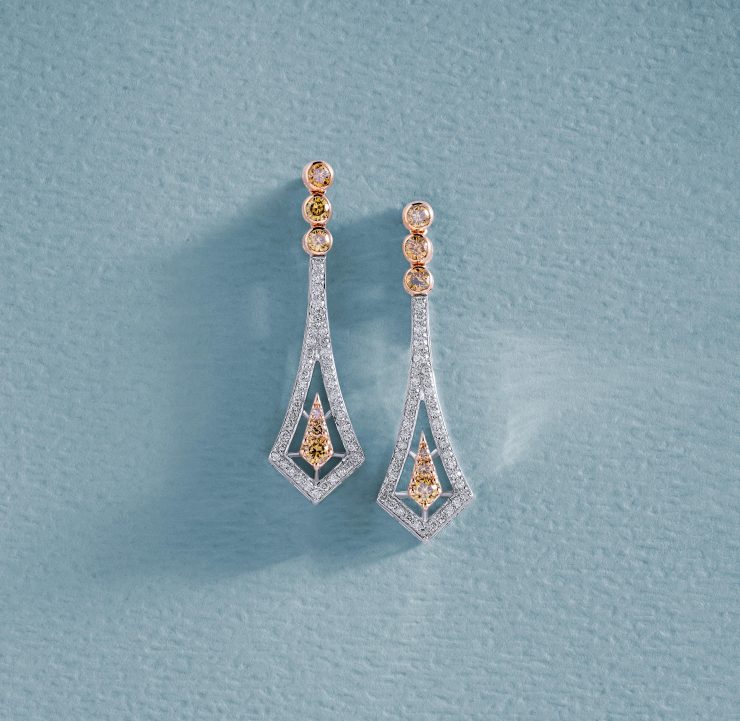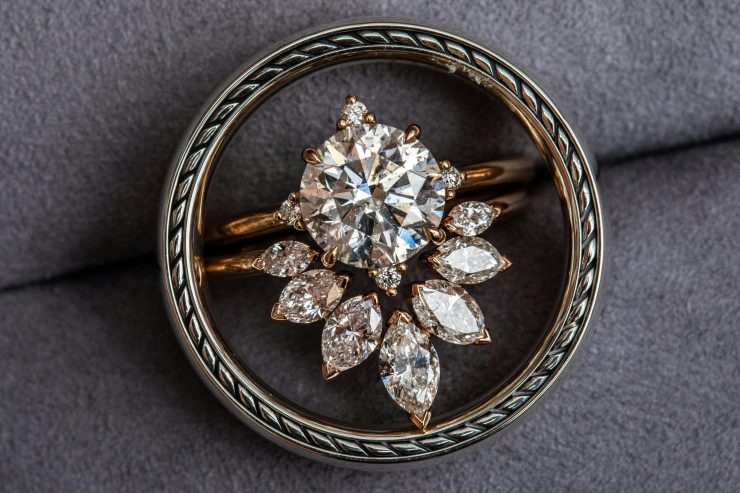The Importance of Clarity in Diamonds
Clarity is one of the Four Cs of diamond grading—alongside carat weight, color, and cut—and plays a significant role in determining the value and appearance of a diamond. Clarity refers to the absence or presence of internal and external imperfections, known respectively as inclusions and blemishes. These imperfections are naturally formed during a diamond’s formation deep within the Earth over millions of years. Because every diamond is unique, the clarity grade helps consumers and gemologists understand how “clean” the stone appears, both to the naked eye and under magnification. Even small inclusions can impact a diamond’s brilliance by disrupting the path of light through the stone. As a result, high-clarity diamonds, which possess fewer imperfections, tend to command higher prices. However, the rarity and cost of such diamonds have led to the development and increased popularity of clarity enhancement treatments, allowing lower-grade diamonds to be improved and sold at more accessible price points. Understanding the difference between natural and treated diamonds, and how clarity enhancement fits into the equation, is essential for making an informed purchase.

What Are Diamond Clarity Enhancements?
Diamond clarity enhancements are procedures designed to improve the visual appearance of a diamond by reducing or masking its internal flaws. These treatments can transform a visibly included diamond into one that appears significantly cleaner to the naked eye. There are two primary categories of clarity enhancement techniques: fracture filling and laser drilling. Fracture filling involves injecting a glass-like substance into surface-reaching inclusions or cracks to make them less visible. The filler has a refractive index similar to that of diamond, which minimizes the appearance of the flaw. Laser drilling, on the other hand, is used to create tiny tunnels that reach deep-seated inclusions; these tunnels allow the inclusion to be bleached with acid or removed altogether. While effective at improving a diamond’s clarity, these enhancements are not without controversy. They can impact the stone’s structural integrity, durability, and long-term value, particularly if not disclosed. It’s important to note that clarity enhancements do not alter the natural origin of the diamond—it remains a real, mined diamond—but the enhancements can significantly influence its market classification and desirability.
Natural Diamonds: Untreated Purity and Value
Natural, untreated diamonds are those that have not undergone any form of artificial enhancement to alter their appearance. These diamonds are appreciated for their unmodified beauty and rarity, especially when they exhibit high clarity grades. In the gem trade, natural diamonds with no enhancements are considered more valuable and prestigious due to their authenticity and unaltered state. They are typically graded by reputable laboratories such as the Gemological Institute of America (GIA), which explicitly identifies whether a diamond is free from treatments. Natural diamonds can range widely in clarity, from Flawless (FL) and Internally Flawless (IF) to Included (I1, I2, I3), and each grade affects the price and desirability of the stone. The market tends to favor diamonds that maintain their original structure and composition, and untreated diamonds are often chosen for high-end jewelry, engagement rings, and investment purposes. Buyers who prioritize tradition, rarity, and long-term value typically gravitate toward natural diamonds, especially when transparency and certification are paramount. For many, the uniqueness and untouched character of a natural diamond enhance its sentimental and monetary worth.
Treated Diamonds: Techniques and Trade-Offs
Treated diamonds offer a more affordable alternative for those seeking the visual appeal of higher-clarity stones without the associated cost of naturally clear diamonds. These diamonds begin as naturally mined stones but contain inclusions that affect their clarity. Through enhancement methods such as laser drilling and fracture filling, these inclusions are minimized or removed, resulting in a visually improved gem. However, the process can affect the diamond’s durability. For instance, fracture-filled diamonds are more sensitive to heat and certain cleaning agents, which can cause the filling material to deteriorate or become discolored. Laser drilling leaves permanent marks in the diamond, though they are usually microscopic. While these treatments can make a diamond appear nearly flawless to the unaided eye, they typically reduce the overall value of the stone in comparison to untreated counterparts. Reputable gemological laboratories such as the GIA often do not provide full grading reports for clarity-enhanced diamonds, although they may issue identification reports. Disclosure is a critical ethical issue in the trade of treated diamonds; sellers are required to inform buyers of any enhancements, and failure to do so can result in legal and reputational consequences. Despite these caveats, treated diamonds remain a viable option for budget-conscious consumers seeking larger or more brilliant stones.
Clarity Grading: Before and After Enhancements
Clarity grading plays a central role in diamond evaluation, and clarity-enhanced diamonds are graded differently than their untreated counterparts. Most gemological laboratories, such as GIA and AGS, do not issue traditional grading reports for treated diamonds because the enhancements alter the original clarity characteristics. Instead, other labs, like the International Gemological Institute (IGI) or EGL, may provide clarity grades on enhanced stones, typically noting that the diamond has undergone treatment. It is essential for consumers to understand that clarity grades on treated diamonds reflect the stone’s appearance after enhancement, not its original clarity. This distinction is vital for assessing value, especially since the same diamond without treatment might have received a much lower clarity grade. Additionally, because clarity enhancement is not permanent in all cases—particularly with fracture filling—buyers must be aware that future wear or damage could affect the diamond’s appearance over time. Furthermore, clarity-enhanced diamonds may react differently to heat or ultrasonic cleaning methods, leading to potential damage. Understanding how these treatments impact grading and long-term performance is crucial for making informed buying decisions, especially when comparing natural and treated stones side-by-side.

Ethical Considerations and Disclosure Practices
One of the most critical aspects of dealing with clarity-enhanced diamonds is the ethical responsibility of full disclosure. Transparency in the gem trade ensures that buyers are fully informed about what they are purchasing and can make decisions aligned with their values and expectations. Ethical jewelers and retailers are required by law and industry standards to disclose any clarity treatments a diamond has undergone. The Federal Trade Commission (FTC) in the United States, for example, mandates clear disclosure of such modifications at the point of sale. Ethical concerns also arise regarding deceptive marketing practices, where treated diamonds may be presented in a way that suggests they are of higher natural quality than they truly are. In some cases, clarity-enhanced diamonds are sold without proper labeling, putting uninformed consumers at risk of overpaying or investing in stones with lower long-term value. Transparency not only protects consumers but also preserves the integrity of the diamond industry as a whole. For conscientious buyers, it’s important to request certification and ask direct questions about enhancements. When clarity-enhanced diamonds are disclosed properly, they can be an acceptable and even desirable choice, especially for those seeking aesthetic appeal at a lower cost.
Durability and Long-Term Care of Enhanced Diamonds
Another important factor in evaluating clarity-enhanced diamonds is their durability and maintenance needs over time. While natural diamonds are renowned for their exceptional hardness and resistance to scratching, clarity enhancements—especially fracture filling—can compromise a diamond’s structural integrity and resilience. The filler material used in fracture-filled diamonds is typically a form of glass or resin, which can degrade under high temperatures or exposure to harsh chemicals. As a result, enhanced diamonds require more careful handling during jewelry repair, resizing, or cleaning. Ultrasonic and steam cleaners, often used by jewelers to clean diamond jewelry, can damage the filling material, leading to cloudiness or visible changes in clarity. Laser-drilled diamonds, although more stable, still contain microscopic channels that can collect debris or moisture over time, potentially affecting the appearance. Owners of clarity-enhanced diamonds should consult professionals experienced in treating such stones to ensure proper maintenance. Many reputable jewelers advise against using at-home cleaning solutions or heat-based cleaning processes with enhanced diamonds. Understanding the unique care needs of treated diamonds is essential for preserving their visual quality and longevity, making ongoing education a key part of diamond ownership.
Investment Value: Natural vs. Treated Diamonds
When it comes to investment and resale value, the difference between natural and clarity-enhanced diamonds becomes even more pronounced. Natural diamonds with high clarity grades and no treatments are generally more desirable in the secondary market due to their rarity, stability, and long-term value retention. These diamonds, particularly those with GIA or AGS certification, often appreciate over time or maintain steady resale potential, making them more suitable for investment purposes. Clarity-enhanced diamonds, by contrast, are considered less valuable by professional buyers and gemologists due to the presence of treatments that alter the original state of the stone. Their resale value tends to be lower and less predictable, and many buyers in the secondhand market are hesitant to purchase treated diamonds, especially if full documentation is not provided. Furthermore, the durability concerns associated with some treatments can make enhanced diamonds less appealing for long-term ownership. While they can be a good option for buyers prioritizing appearance and budget over investment, clarity-enhanced diamonds should generally not be viewed as long-term assets. It is critical for consumers to align their purchase goals—whether sentimental, aesthetic, or financial—with the type of diamond they choose.
Choosing Between Natural and Treated Diamonds
Deciding between a natural or a treated diamond ultimately comes down to personal priorities, budget, and intended use. For buyers seeking authenticity, rarity, and investment potential, natural, untreated diamonds are the preferred choice. They offer unmatched prestige and assurance of originality, and their value tends to remain stable over time. However, natural diamonds with high clarity grades can be prohibitively expensive for some buyers. In such cases, clarity-enhanced diamonds can offer a visually stunning alternative at a fraction of the cost. These stones allow consumers to enjoy larger carat weights or more impressive visual appeal within a fixed budget. For occasions such as engagements, anniversaries, or milestone celebrations, treated diamonds can be perfectly suitable as long as their nature is transparently disclosed. It’s also worth noting that clarity-enhanced diamonds can serve a useful role in fashion or custom jewelry, where aesthetics are the primary concern. Ultimately, consumers should seek out reputable jewelers, review certification documents, ask about treatments, and consider long-term implications. Education is the most powerful tool when navigating the diamond market, and a well-informed buyer is best positioned to make a choice they’ll be satisfied with for years to come.